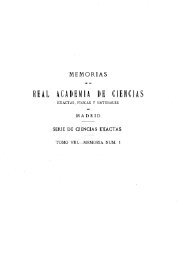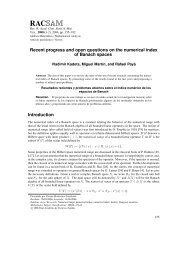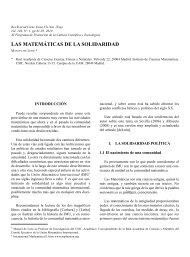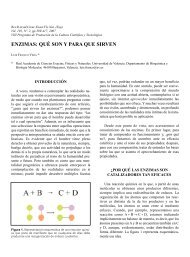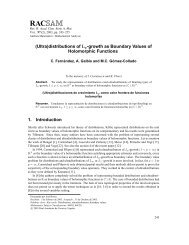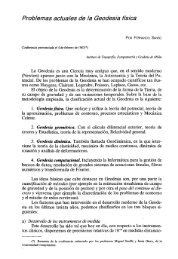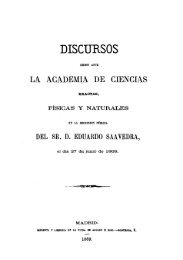The water footprint and virtual water exports of Spanish tomatoes
The water footprint and virtual water exports of Spanish tomatoes
The water footprint and virtual water exports of Spanish tomatoes
- No tags were found...
You also want an ePaper? Increase the reach of your titles
YUMPU automatically turns print PDFs into web optimized ePapers that Google loves.
D. CHICO et al. 31the <strong>water</strong> <strong>footprint</strong>. In these cases, the small share <strong>of</strong> a particularproduction system <strong>and</strong>/or season <strong>of</strong> the provincialproduction is probably a source <strong>of</strong> bias. For example, in thecase <strong>of</strong> Sevilla province, the average area under greenhouseis 33 ha compared to 2196 ha <strong>of</strong> tomato production or 13 ha<strong>of</strong> rainfed tomato in Las Palmas province compared to 2031ha cultivated annually for tomato production. <strong>The</strong>se smallsurfaces, together with recorded yields, as shown in the statisticaldatabases should probably be reviewed.4.2. Water apparent productivity <strong>of</strong> surfaceor ground<strong>water</strong>In this section, the <strong>water</strong> apparent productivity is analyseddepending on the origin <strong>of</strong> <strong>water</strong>; ground or surface <strong>water</strong>.Information on the origin <strong>of</strong> irrigation <strong>water</strong> specifically forhorticultural production in each province is not directly available.However, in some <strong>of</strong> the main productions provinces,the <strong>water</strong> is overwhelmingly <strong>of</strong> a specific origin; surface inthe case <strong>of</strong> Badajoz, Cáceres <strong>and</strong> Navarra provinces (CHG,2008) <strong>and</strong> ground<strong>water</strong> in the case <strong>of</strong> Almería (Regional Government<strong>of</strong> Andalusia 2003) <strong>and</strong> Canary Isl<strong>and</strong>s (Las Palmas<strong>and</strong> Tenerife provinces). <strong>The</strong>se six provinces represent 61%<strong>of</strong> the yearly national production.<strong>The</strong> origin <strong>of</strong> the <strong>water</strong> is related to the production system.In these cases, the provinces using surface <strong>water</strong> producearound 98% <strong>of</strong> their production in open-air systems while thetwo provinces accounted for with ground<strong>water</strong> produce over90% <strong>of</strong> their <strong>tomatoes</strong> in greenhouses. As seen in Table 4 theground<strong>water</strong> apparent productivity is notably higher than surface<strong>water</strong> productivity. It clearly exceeds the average productivity<strong>of</strong> blue <strong>water</strong> used in irrigated agriculture in Spain,which is about 0.44 €/m 3 according to the <strong>Spanish</strong> Ministry <strong>of</strong>the Environment <strong>and</strong> Rural <strong>and</strong> Marine Affairs (MARM, 2007).



